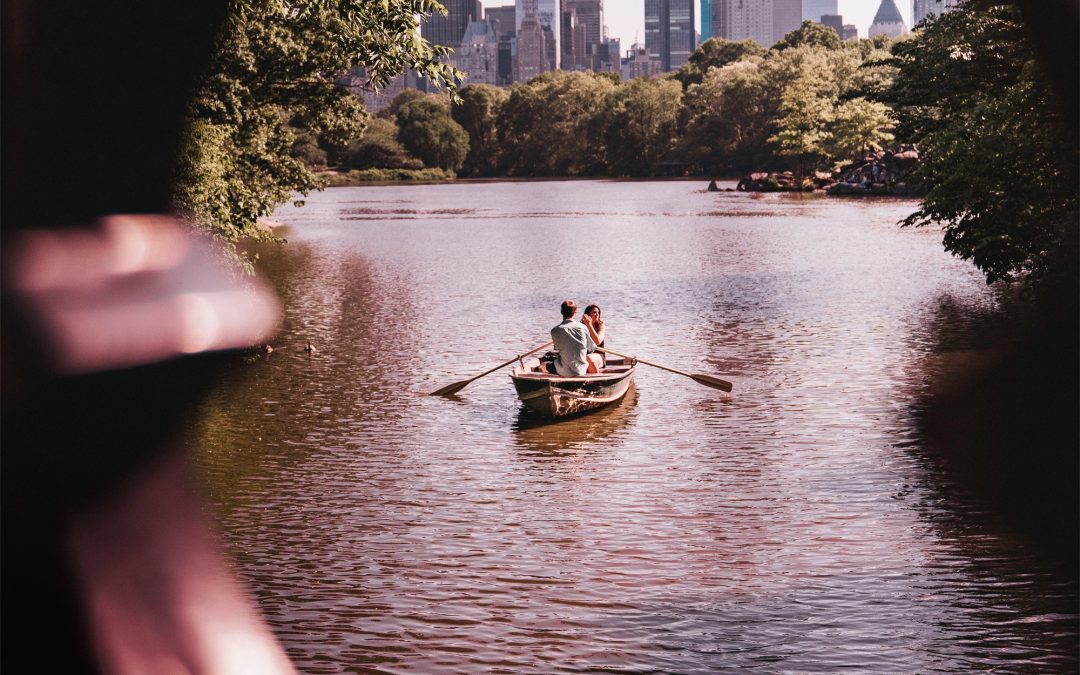New York City boasts 28,000 acres of parkland; from an aerial view, this greenery pops amidst a sharp grid of gray buildings and roads. The parks that characterize the Big Apple range greatly in size and shape, from Staten Island’s sweeping Greenbelt to Septuagesimo Uno, an 140 square foot park in the Upper West Side.
NYC contains within its boroughs over 1,700 parks, some dating back to the 1600s. Parks have played important roles in New York City since America’s origin, and throughout the years have experienced periods of both neglect and rejuvenation. Today’s city parks are cleaner and safer than ever in no small thanks to a robust Parks and Recreation Department.
Here’s a look at three of the city’s most iconic parks, and how they have evolved over the years from colonial times to present day.
Bowling Green
New York City’s oldest park has been in use for 400 years, beginning in the 17th century when Dutch and English settlers used it as a cattle market and parade ground. The area was made into a park in 1733, paved with cobblestones in 1744, and under the control of the British used as execution grounds for Revolutionary prisoners. A statue of King George III was erected there in 1770 before being toppled (and recast as musket balls) after the Declaration of Independence was signed in 1776.
The park was improved with trees and grass in 1784, after which it quickly became a gathering place for public meetings and events throughout the 19th century. Presidential mansions were built there for George Washington to reside before the US capitol was moved to Philadelphia.
Though Bowling Green suffered neglect after WWII, the city restored it in 1970 and it’s since become one of the highest trafficked plazas in New York City. The tear-drop shaped park is a Historical Site and its Charging Bull statue a key fixture of the Financial District.
Central Park
The most famous park in NYC hardly needs an introduction. Central Park, designed by renowned landscape architect Frederick Law Olmsted with the help of Calvert Vaux, was the first public park to be built in America. Olmsted and Vaux won a design competition with a plan they called “Greensward Plan,” which profoundly shaped the most famous and frequently visited park in the world.
Central Park’s story dates back to New York City in the 1820s through 50s, when population quadrupled in a short period of time. When it became apparent that a public park would be needed for residents to escape the chaos of city life, the park was established in 1857. It was built on 778 acres of city-owned land, then expanded to its current 843 acres in 1873.
The park’s construction wasn’t immediately beneficial for all, however. The designated land had inhabitants at the time: free blacks and Irish immigrants who had built communities there complete with farms, churches and cemeteries. Some 1,600 people were evicted in the construction process overall.
Once built, Central Park would go through various phases of decline and revival. The park’s first decline came right after it’s construction and lasted through the turn of the 20th century before being cleaned up in the 1930s. In the 1960s Central Park became host for political and cultural events, and saw a second decline before undergoing renovation in the 80s, 90s, and early 21st century.
Prospect Park
Also designed by Olmsted and Vaux, Brooklyn’s Prospect Park has a history far older than its creation in 1867. Mount Prospect, located in the middle of the park, was forged by glacial activity over 170,000 years ago in the region. Much of the area was forested before European colonization cleared out a significant portion of woods.
Prospect Park was also the site of the Battle of Long Island during the American Revolution. Though the Continental Army lost this battle, they were able to hold off the British long enough to escape to Manhattan. Plaques honoring this event are part of the reason it was chosen to be preserved as a large park area.
Between 1915 and 1980, budget cuts and maintenance cutbacks saw Prospect Park decline to the point at which it was more of a hazard than a boon to residents in surrounding neighborhoods. When the Prospect Park Alliance was formed in 1987, an extensive restoration project was launched to carefully rebuild the original architecture.
Today, the 778 acre park includes a zoo, Botanical gardens, ice skating rink, waterfalls, playgrounds, bandshell, and ball fields. These quasi-modern additions make Prospect Park a mixture of historic scenery, quiet greenery, and activities for parkgoers of all ages.
Stay tuned for more information on NYC neighborhood parks in future blog posts.

